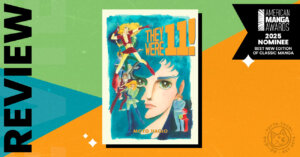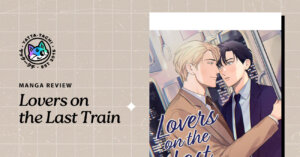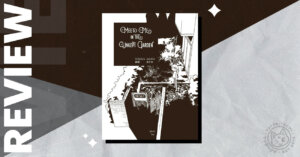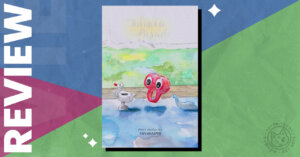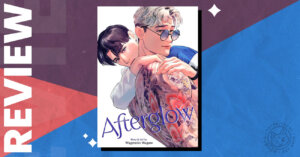Content Warning: Pandemic, Political Assassination, Threat of War, Suicide, Murder, Non-Graphic Injury, Mild Transphobia, Forced Outing
Synopsis
Set in the distant future, where Earth has expanded colonies out into far-flung space, this 1970s sci-fi classic follows the adventures of a group of young people applying for an intergalactic, interspecies, cosmic academy. After finishing their final tests, these 10 young hopefuls must survive onboard an abandoned space ship for 43 days with no supervision. But when they arrive and suddenly there are 11 students instead of 10, suspicions arise. Can they work together to keep the ship safe, or will their fear of conspiracy get the better of them?
Back to the Future
I felt so nostalgic reading this manga. The 1970’s idea of what the future looked like reminded me of the classic sci-fi my dad used to watch. The aesthetic reminded me of film and TV series like Logan’s Run and UFO. I absolutely burst out laughing when one character produced important evidence held on a cassette tape! The clothing has that delightful 70s space couture look, with bright bold colours and large white belts. Whilst each planetary nation has their own style of clothing, nothing would look out of place in the canteen of the Enterprise. This consistency of design ideals and contemporary (for the time) fashion tropes really makes this manga feel as though it’s a part of a legacy of global science fiction, and not something unique to just Japan.
Stylistically, the manga has that classic look that many Year 24 Group artists helped develop—the complex panel work, the detailed artwork giving way to simplistic yet comical, facial expressions, and of course, the large sparkly eyes. I loved Hagio’s colour work in this, as she employed more skilful use of ink and watercolour work than any modern manga I’d read. The playful and emotive use of colour would not look out of place at a Die Brüke exhibit. The composition of her panels, and in particular her cover pages, reminded me of pulp fiction covers. I, for one, think pulp covers are some of the most fun and imaginative out there. However, others might find them a bit old-fashioned and camp for their tastes.
Science Fiction/Double Feature
Denpa’s new edition of They Were 11! includes both the original 1975 adventure, and the 1976 follow up: They Were 11! Continued: Horizon of the East, Eternity of the West. The two stories follow the same protagonists, although the second part chooses mostly to focus on only three of them. The two stories have striking differences in tone and genre conventions.
The first falls heavily into the category of “hard sci-fi”—that is to say, fiction that focuses mainly on feasible future technology. Popular examples would include Stanley Kubrick’s 1968 classic 2001: A Space Odyssey, and Ridley Scott’s The Martian. Part 1 is a fast-paced, locked-room mystery coupled with a race against time to stop the impending scientific doom. This comes from classic hard sci-fi MacGuffins like an escaped virus, computer malfunctions, and a displaced orbit.
Meanwhile, Part 2 is “soft sci-fi.” It is a political drama set in a solar system where two planets are on the brink of war due to a messy coup that took place in the East and impacted people in the West. The political parallels are hard to ignore given that there hadn’t been a decade of Hagio’s existence where there wasn’t a war between Asia and America. The focus isn’t on technology, but rather on the sociopolitical relationships between different people. It also allows for mysticism to exist in this universe, much in the same way series like Star Wars and Dune do. The science is a lot more woolly, even if the diagram explaining how two planets can be east and west of each other looks like something out of a textbook.
That isn’t to say there are hard and fast rules for categorising these things. Sci-fi as a genre encompasses everything from Frankenstein to Tokyo Mew Mew. However, if you love hard sci-fi but hate soft, you won’t want to read on. And if you love soft sci-fi but hate hard, you won’t get past the first chapter.
Men are from Venus, and Women are from Mars
Like much of Hagio’s work, there is an innate queerness to this story. The main two protagonists are Froh and Tada. The pair start out as rivals but become engaged by the end of Part 1. Tada introduces himself in Part 1 as a man, and he gets angry and violent when called a woman. At first, this reads as Froh being explicitly trans, however later in the story, Froh is outed as being a “Gyandrite”—a species who starts life without any sex organs and develops them once they reach adulthood. Froh admits that their determination to become a man is born out of the way women on their home world are treated. They come from a patriarchal society, where only the first-born are allowed to become men and all others are forced to take hormones to turn them into women. Froh goes back and forth on whether, in a world without gender inequality, they would rather become a man or a woman. The option to remain genderless or genderfluid doesn’t seem to occur to them! Although Hagio does introduce another “Gyandrite” who happily remains sexless and genderless past adolescence, they sadly only appear in the first story.
This outdated attitude toward gender mimics some early boys’ love series, where a cis female author uses love stories between men to explore what it would be like to be in a relationship without any rampant misogyny. This is not necessarily bad, but the idea that girls only want to become boys so they won’t experience misogyny any more is problematic, to say the least. Especially since trans men still face an enormous amount of gender-based discrimination.
I disliked the romantic relationship between Tada and Froh. Whilst Froh is an incredibly fun and likeable character, with their bold personality and classic tsundere moments, I found Tada to be a tad boring. He has an interesting backstory, but his personality is just cookie-cutter generic hero. Hagio is talented enough to give the pair chemistry, with a relationship built on friendship first, but then the gender troubles begin…
Tada and Froh can only be together if Froh becomes a woman, even though this is beyond their control (unless they choose to inject hormones). When they first get together, Tada thinks that Froh becoming a man would be “a bit of a shame,” and as such, Froh promises to become a woman. When Froh wants to break up, he announces he’s going to become a man and date women instead. This whole thing has such a binary and heteronormative approach to gender and sexuality. Why can’t Froh and Tada be together regardless of gender? Why must Froh choose one specific gender and stick with that for all their life? Why can they only date women if they’re a man? In an attempt to explore wider concepts of gender, Hagio remains within the strict binary.
The Big Crunch
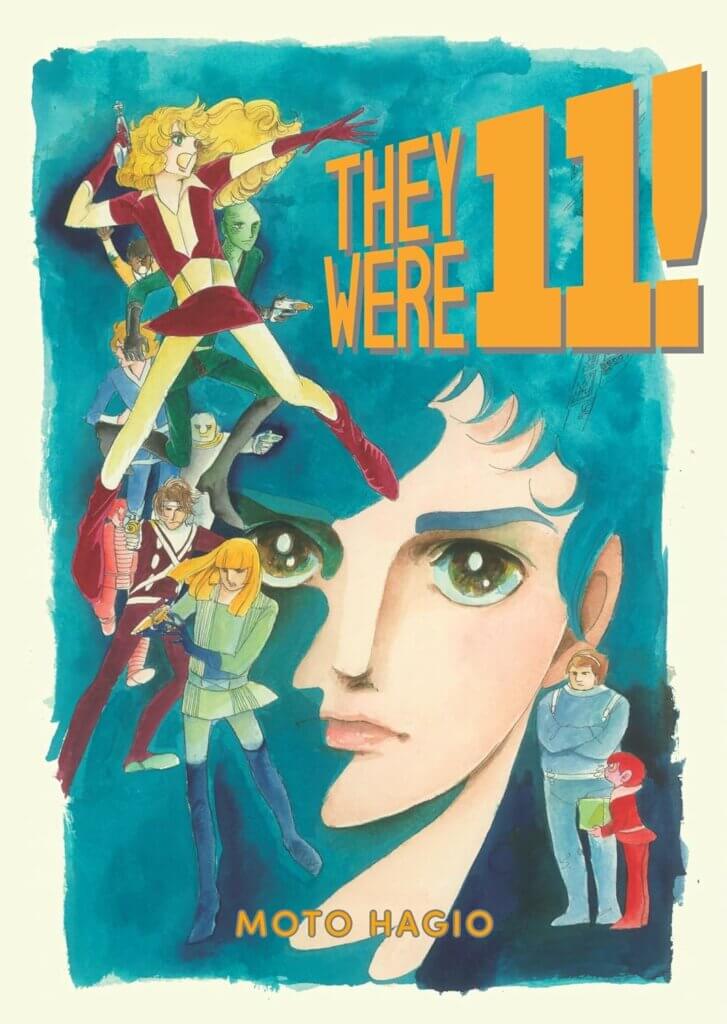
In terms of content, Hagio isn’t offering anything new, nor is she attempting to. There isn’t a single thing here that hadn’t already been done by Arthur C. Clarke, Ursula K. Le Guin, or Isaac Asimov. The only difference is that this is a Japanese graphic narrative aimed at young girls. And an excellent one at that! Hagio expertly tackles both hard and soft sci-fi to create a book that would happily sit alongside the greats. I also appreciate the legacy of this work in proving that young girls have just as much interest in scientific space adventures as boys do! Whilst I wouldn’t recommend this for younger readers due to how dated the artwork and content feels, I think adult sci-fi and shoujo fans alike will find something to love about this book.
On a final note, I was impressed by translator Ajani Oloye’s careful approach to pronouns in this work. Japanese allows for pronouns to be excluded when referring to someone in a way that feels naturally, whereas that is not the same in English.. Oloye’s decisions on when and how to use gendered and non-gendered pronouns for Froh was perfect, in my opinion. The whole team at Denpa has put together a fantastic book.
You can buy They were 11! from Bookshop, Amazon, and Barnes & Noble. Also available to buy digitally from Denpa.
If you liked They Were 11! you may also like…
– Saga
Credits
Story and Art: Moto Hagio
Translator: Ajani Oloye
Proofreading: Momo
Production: Nicole Dochych and Lauren Eldon
Digital: Taneli Vatanen
Publisher: Denpa Books
Thank you to Denpa for providing a review copy. Receiving this copy did not affect the reviewer’s opinions as expressed here.
Article edited by: Stephanie Liu
The Good
- Classic 70s Sci-fi
- Pioneering Shoujo
- Beautiful and dynamic artwork
The Bad
- Classic 70s Sci-fi
- Outdated views on Gender and Sexuality
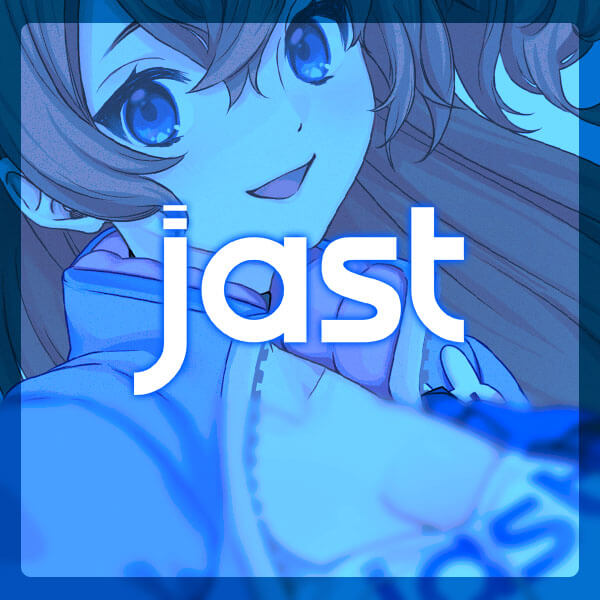
Featured Sponsor - JAST
The sweetest romance and the darkest corruption, the biggest titles and the indie darlings; for visual novels and eroge, there's nowhere better.
Big thank you to our supporters
From their continous support, we are able to pay our team for their time and hard work on the site.
We have a Thank-You page dedicated to those who help us continue the work that we’ve been doing.
See our thank you page
